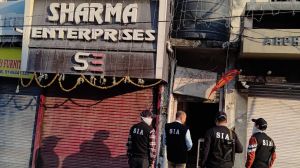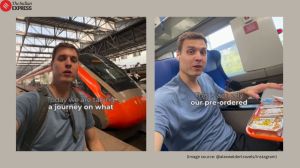Building Blocks – Every Move You Make
In urban spaces, design, and not surveillance, is most helpful in creating a sense of security
 Eyes On Us: The India Habitat Centre in Delhi
Eyes On Us: The India Habitat Centre in Delhi
Canadian-American activist and writer Jane Jacobs’s ideas of “eyes on the street” and “cities as interconnected systems” have fuelled the imagination of generations of urban designers, particularly on the question of security. Can design help us feel safe in our cities and our neighbourhoods?
Arunava Dasgupta, head, department of urban design, School of Planning and Architecture, Delhi, says a sense of security in urban spaces has to do with eyes in and on the space. Restricted access, opaque built enclosures and lack of porosity are primary deterrents to feeling safe.
For instance, two urban design projects — Nehru Place by the Delhi Development Authority (early ’80s) and the India Habitat Centre by Joseph Allen Stein (mid-1990s) — were designed as commercial hubs with offices centred around plazas. However, while the former presents a more egalitarian pattern of use, at IHC, one wonders at the invisibility of this vast complex’s service staff. “Habitat is well-managed, comfortable and beautiful but, as a space, Nehru Place presents an equitable idea of the collective, simply because of the range and number of people using the space and the possibility of being part of a group that is always under some kind of visual connect with others in the space. IHC has a more controlled environment, where guards and electronic surveillance become important agents of security,” says Dasgupta.
Dasgupta cites the example of old cities, where winding streets with their subtle hierarchies always informed people of the level of “publicness” and privacy, both for its residents and visitors. The idea of being able to “see to and see through” gave a sense of security and allowed for a gradation of purpose. Similarly, community centres like Basant Lok and local shopping areas like Alaknanda that came up in the ’80s in Delhi, to service immediate neighbourhoods, have a porous, interconnected system of spaces. It makes it easier, for example, for the halwai in the bazaar to call out his loyal customer when he’s got fresh stock.
India Gate, which is one of Delhi’s most popular public spaces, treats collective and intimate spaces differently, marking subtle changes through design. Dasgupta says, “India Gate is primarily an evening and night space. There are shaded or less-lit areas that tell you to stay away when it’s dark, while the rest of it is accessible and free to use. You don’t need to light up every inch of a place and then keep guards to dissuade people. Design has a way of making spaces tell us what we can do and when.”
Places like Ahmedabad’s walled city are vibrant because they allow for accessibility within and between buildings, thus fostering association and cooperation. Gated communities dilute this thread of collective belonging, with even neighbours frequently remaining strangers. Danish architect and urban design consultant, Jan Gehl, affirms: “First life, then spaces, then buildings — the other way around never works.”



- 01
- 02
- 03
- 04
- 05




























